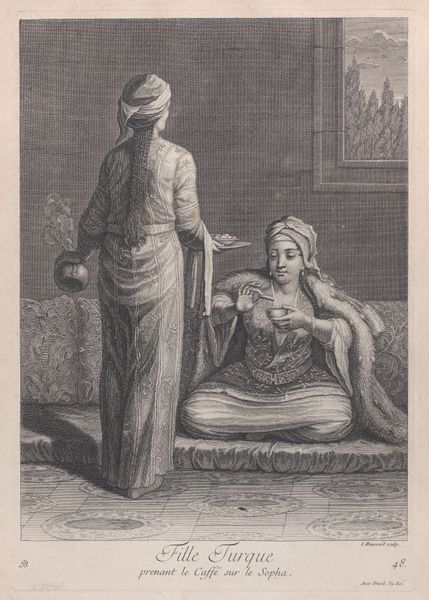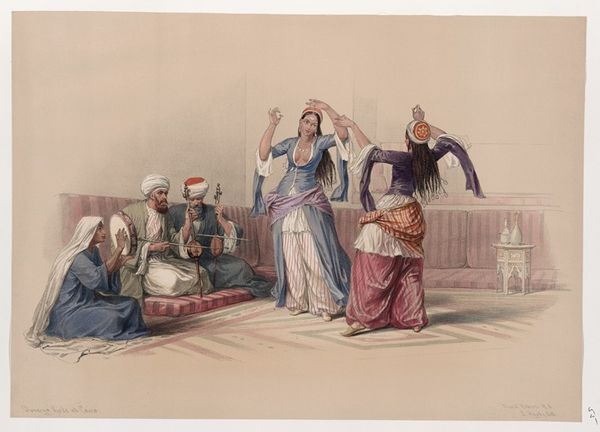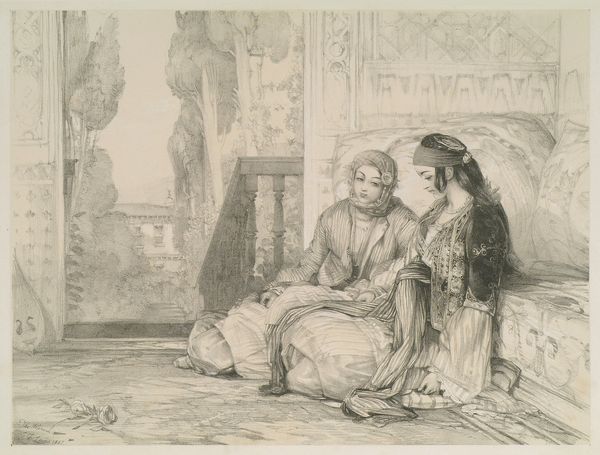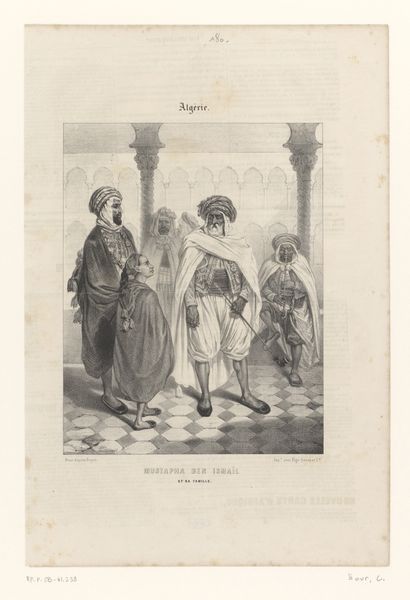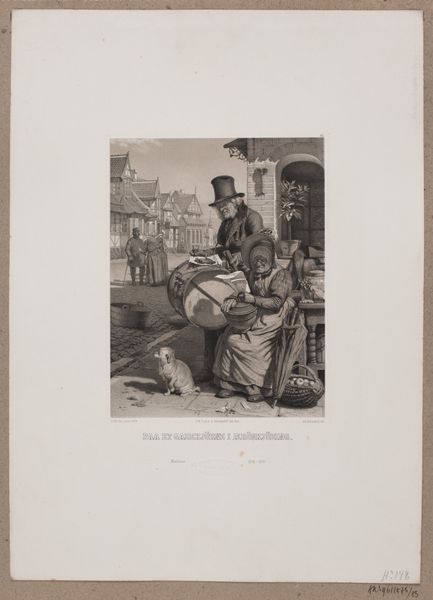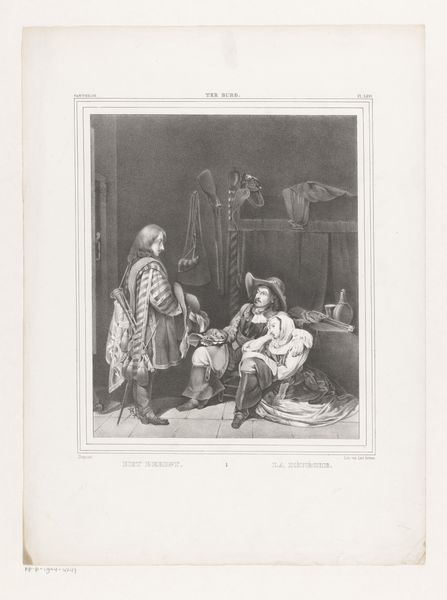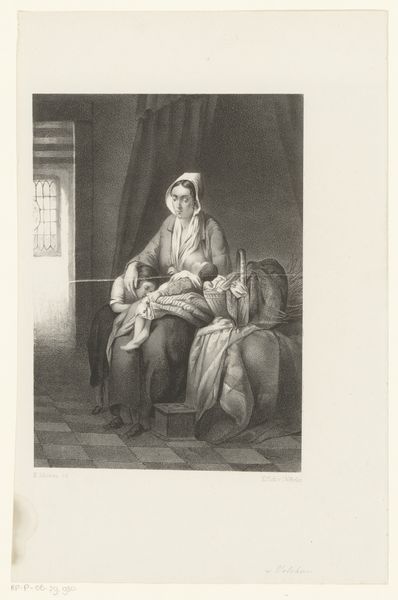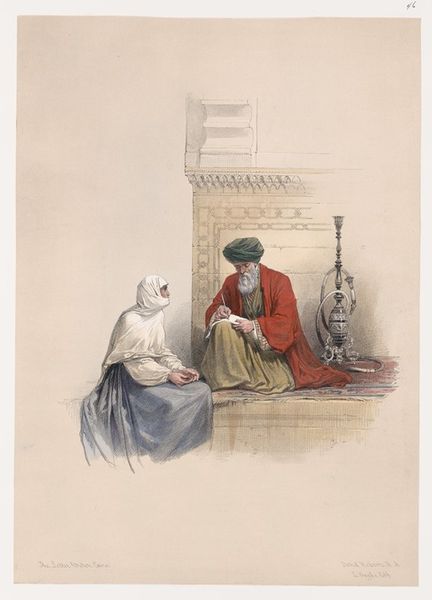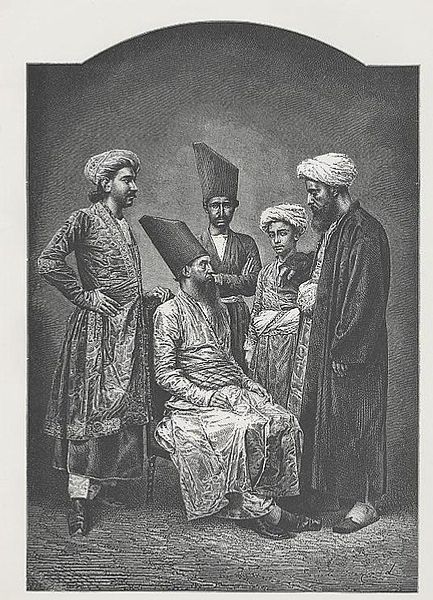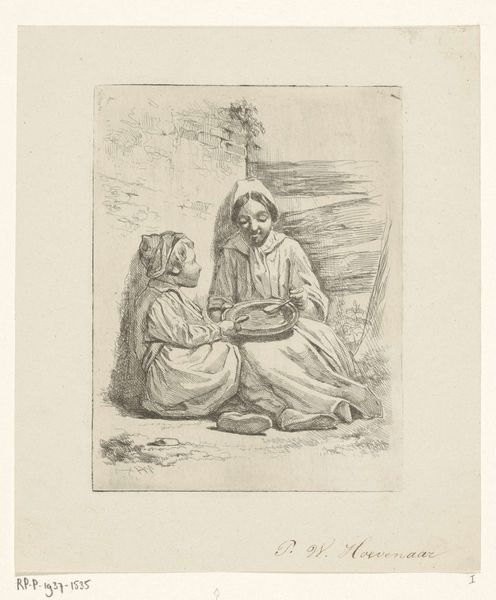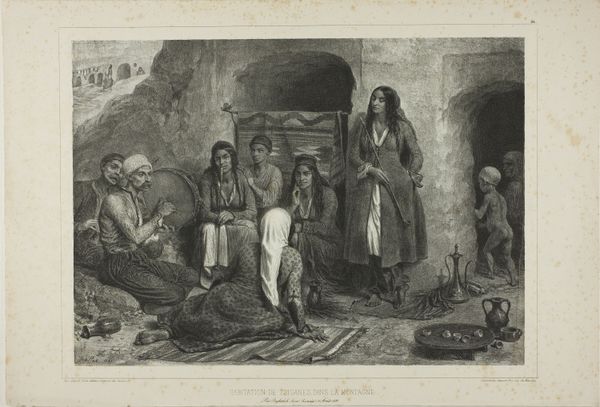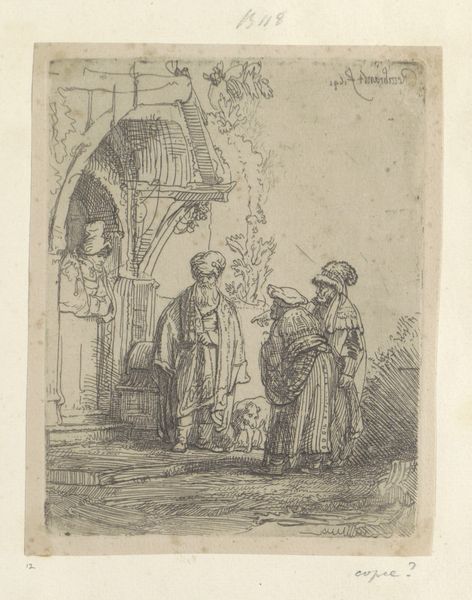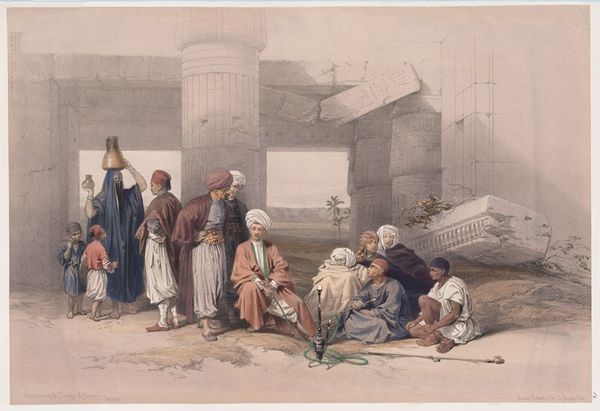
Copyright: National Gallery of Art: CC0 1.0
Editor: Here we have "Femmes Mauresques de Constantine," created by Théodore Chassériau in 1851. It's a lithograph, so ink on paper, giving it this lovely, delicate quality. There's an undeniable sense of Orientalism to it; what strikes you about this print? Curator: Immediately, I'm drawn to the production of this lithograph within its specific social context. Chassériau, a Frenchman, depicts these women in Constantine, Algeria. The act of creating this print involved extraction - from the lived reality of these women, their garments, the cultural objects surrounding them – to a marketable print meant for consumption in Europe. Notice how the textures, presumably sourced from the depicted fabrics, have been carefully rendered to give a feeling of “authenticity”? Editor: So, you are saying the print is not so much a depiction but a commodification? Curator: Exactly. This wasn't just observation, but a mediated representation for a European audience hungry for exotic imagery. The very act of turning these women into an image available for purchase through print transforms them into a consumable item. Editor: It is a troubling perspective. So the lithographic process, usually seen as democratizing art through mass production, becomes complicit in objectifying these women. How does that impact the value or relevance of the work? Curator: It pushes us to question the artist's role and the market forces driving such representations. Instead of solely focusing on aesthetic appeal or technical skill, we are prompted to scrutinize the labor and cultural exploitation inherent in its creation and distribution. What we need to question, then, is how these historical dynamics persist in today's art market. Editor: This is quite different from how I initially approached the work. I was captivated by its seeming grace. Curator: But now hopefully you also see how a seemingly innocuous print carries embedded colonial power dynamics related to its means of production, materiality, and circulation. Editor: Definitely. Thanks to your materialist reading, I can see it more critically.
Comments
No comments
Be the first to comment and join the conversation on the ultimate creative platform.
